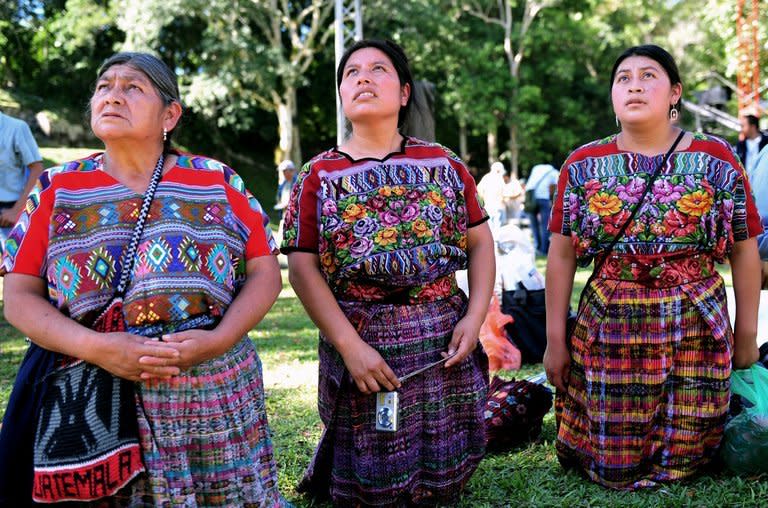Jubilation, dread as page turns on Mayan calendar
Thousands of people were expected to flock to the Mayan ruins at Chichen Itza in Mexico before daybreak Friday -- some to hail the start of a new Mayan era, others to bid farewell to the world. Even though officials here said no special celebrations were planned to mark the turn of the Mayan calendar on December 21, which happens to coincide with the Winter Solstice, up to 20,000 revelers were awaited at the pyramids anyway. Around the world, the superstitious have spent the week fretting over an apocalyptic interpretation of the ancient civilization's calendar, taking refuge in mountains or bunkers, with some stockpiling guns and survival kits. Chichen Itza was once one of the largest Maya cities, and its famous ruins are a popular attraction in Meso-America, and officials were expecting a crush of visitors to the UNESCO World Heritage site on the Yucatan peninsula. "We're expecting between 15,000 and 20,000 visitors," a spokesman for Mexico's National Institute for Anthropology and History, tasked with the safekeeping of the nation's cultural heritage, told reporters. In Guatemala, President Otto Perez was to kick off a long night of Mayan dance and rituals late Thursday in Tikal National Park in the north of the country lasting until dawn. Tikal, near the Belize border, is the largest archaeological site and urban center of the Maya civilization. The December 21 mystery stems from a carved stone found in Tortuguero, a Mayan site in Mexico. The relief contains a cryptic allusion to something really big happening on Friday. However, most experts interpret the calendar to mean December 21, 2012 is simply the end of a 5,200-year era for the Maya and the start of another. This reading says that Friday marks the end of 13 cycles with which they measured time -- each lasting 400 years. If that's right, everybody can relax and enjoy the ceremonies as folklore. Governments and tourism officials have thus scrambled to cash in on the doomsday frenzy and lure visitors to Mayan sites from Mexico to Belize, El Salvador, Honduras and Guatemala. In Brazil, there was an unusual number of visitors to the town of Alta Paraiso attracted by -- or perhaps fleeing -- the impending cosmic occurrence. The town, well inland of the coast and in Brazil's central highlands, is seen as one of the safest places in the country to ride out doomsday -- if disaster should, in fact, strike. It also is built on a layer of quartz and other crystals, which New Age adherents believe are imbued with special energy -- adding a bit of extra protection. In the United States, which is still in shock after a massacre at an elementary school, officials in one county of the midwestern state of Michigan sent thousands of students home early for the Christmas break -- just in case. The Lapeer County district said "rumors connected to the Maya calendar that predicted end of the world" had distracted students and teachers, even though they have been "thoroughly investigated and determined to be false." Still, classes were canceled Thursday and Friday. In the run-up to the ceremonies, Mayan high priests purified some 20 sites that are sacred to their culture, including Tikal in Guatemala. But a leader of an association of these priests, Sebastian Mejia, said the government is cheapening it all by treating like a circus show. "For us it is not a show and it is not about tourism. It is something spiritual and personal," Mejia said. The site in Tikal is a UNESCO world heritage site that boasts six pyramids as high as 70 meters and an astronomical observatory. To get to it, you have to hike through the thick forest of a national park that is home to 500 species of butterflies, 300 kinds of birds, jaguars, pumas, wild boar and deer.




